Converting Columbia’s “Bubble” Into a Coronavirus Field Hospital
Columbia University's "Bubble" soccer field in Inwood becomes a coronavirus field hospital to handle patients from adjacent Allen Hospital.
By Rebecca Baird-Remba May 2, 2020 10:00 am
reprints
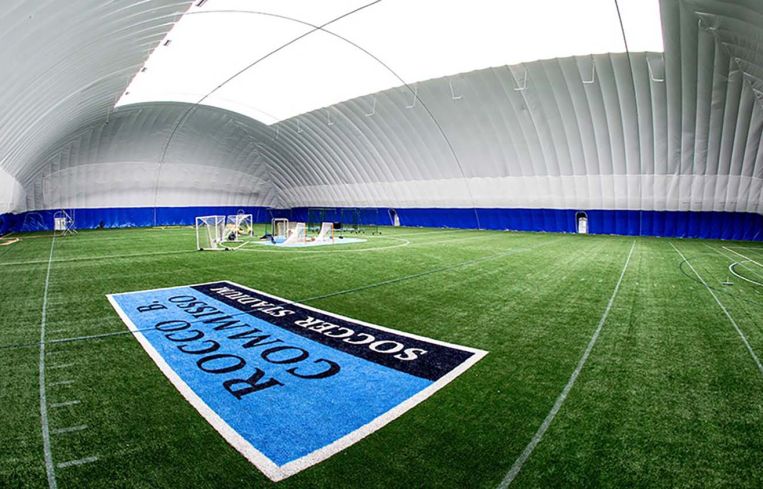
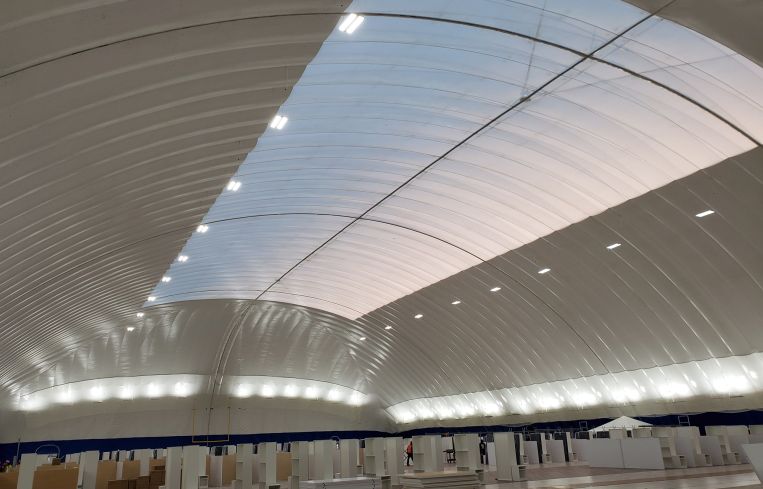
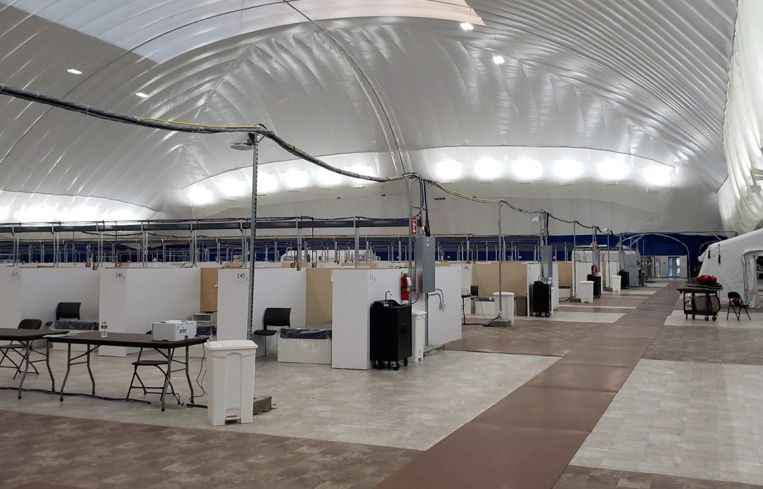
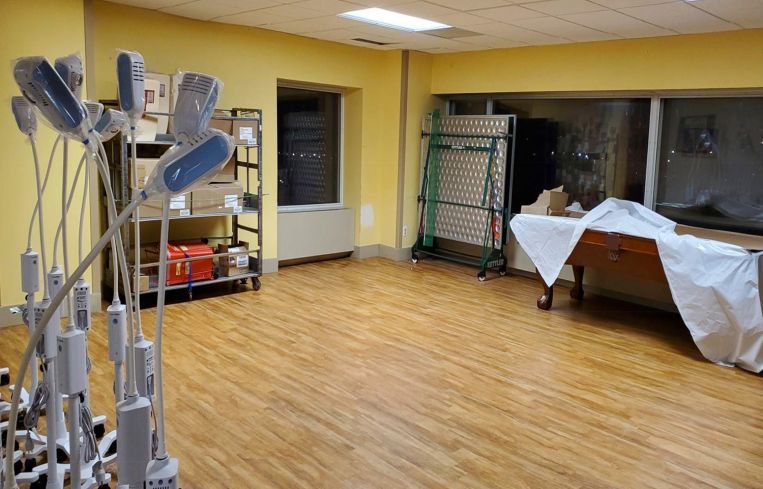
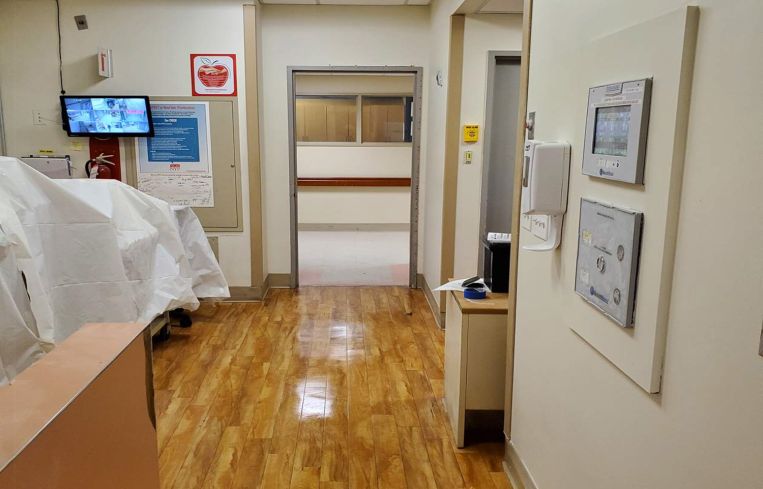
As hospitals across New York City struggled with an influx of coronavirus patients, NewYork-Presbyterian Allen Hospital, located at the northern tip of Manhattan, decided to convert Columbia University’s adjacent, tent-covered soccer field into a field hospital for lower-risk patients.
The hospital hired Turner Construction to help build 216 beds at Columbia’s Baker Athletic Complex, on the corner of 218th Street and Broadway in Inwood. Commonly known as the Bubble, the 92,000-square-foot soccer field is enclosed in a heated plastic dome during the winter so that Columbia’s soccer team can practice there. Now it is being used to treat patients with mild symptoms of COVID-19, the disease caused by the novel coronavirus.
The dome lacked wiring for electricity, so Turner installed three 500-kilowatt generators and ran electrical infrastructure throughout the space. The contractors also provided infrastructure for “crash tents” where workers can resuscitate patients who enter cardiac arrest or other kinds of crises. The wiring and outlets also help power portable X-ray machines and other kinds of monitoring equipment. Construction workers put in special areas for oxygen tank storage as well. Meanwhile, the hospital put vinyl sheet flooring over the AstroTurf field and set up the beds and tents.
Design and construction happened concurrently, with work taking place from April 4 to April 13.
And on the third floor of the hospital building next door, Turner was tasked with transforming a psych wing into a coronavirus patient care unit with 24 beds and ventilator capacity. Project manager Mark Meranda, who oversaw both projects, spent about a week working with Array Architects to design and engineer the space before construction began. Meanwhile, hospital administrators relocated the psych patients to a different facility. Construction took about 10 days and wrapped on April 11.
The big challenge, said Meranda, was making sure that construction workers on the site felt safe coming to work and had enough personal protective equipment to avoid contracting the virus. He and his team developed a detailed mitigation plan to ensure workers would minimize contact with sick patients and hospital staff. Workers could enter the under-construction wing of the hospital via a staircase that wasn’t normally open, and a medic was stationed at the bottom of the stairs to test the temperature of everyone who entered.
Workers were given gloves and masks and offered the option of wearing plastic face shields. Meranda also tried to distance workers at least six feet apart by giving each construction trade a different section of the floor and by splitting the workers into two separate shifts: 7 a.m. to 3 p.m. and 4 p.m. to 11 p.m. The site was also sanitized each night.
Despite workers’ fears about construction in a hospital amid a pandemic, “there was a lot of pride within the workforce in terms of doing something beneficial for the city,” said Meranda. “There was a lot of pride in creating both of these spaces knowing that it was going to benefit our city with this pandemic.”


